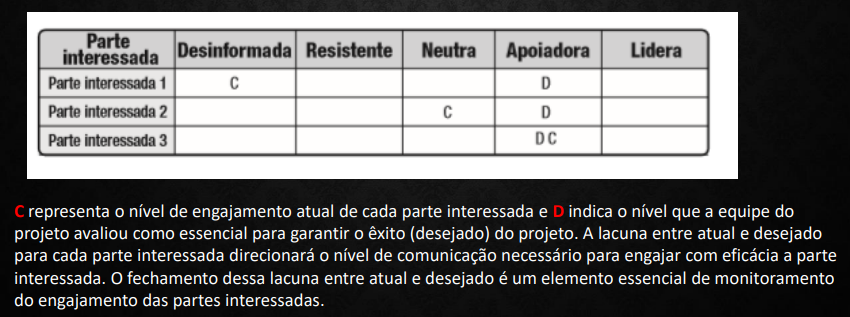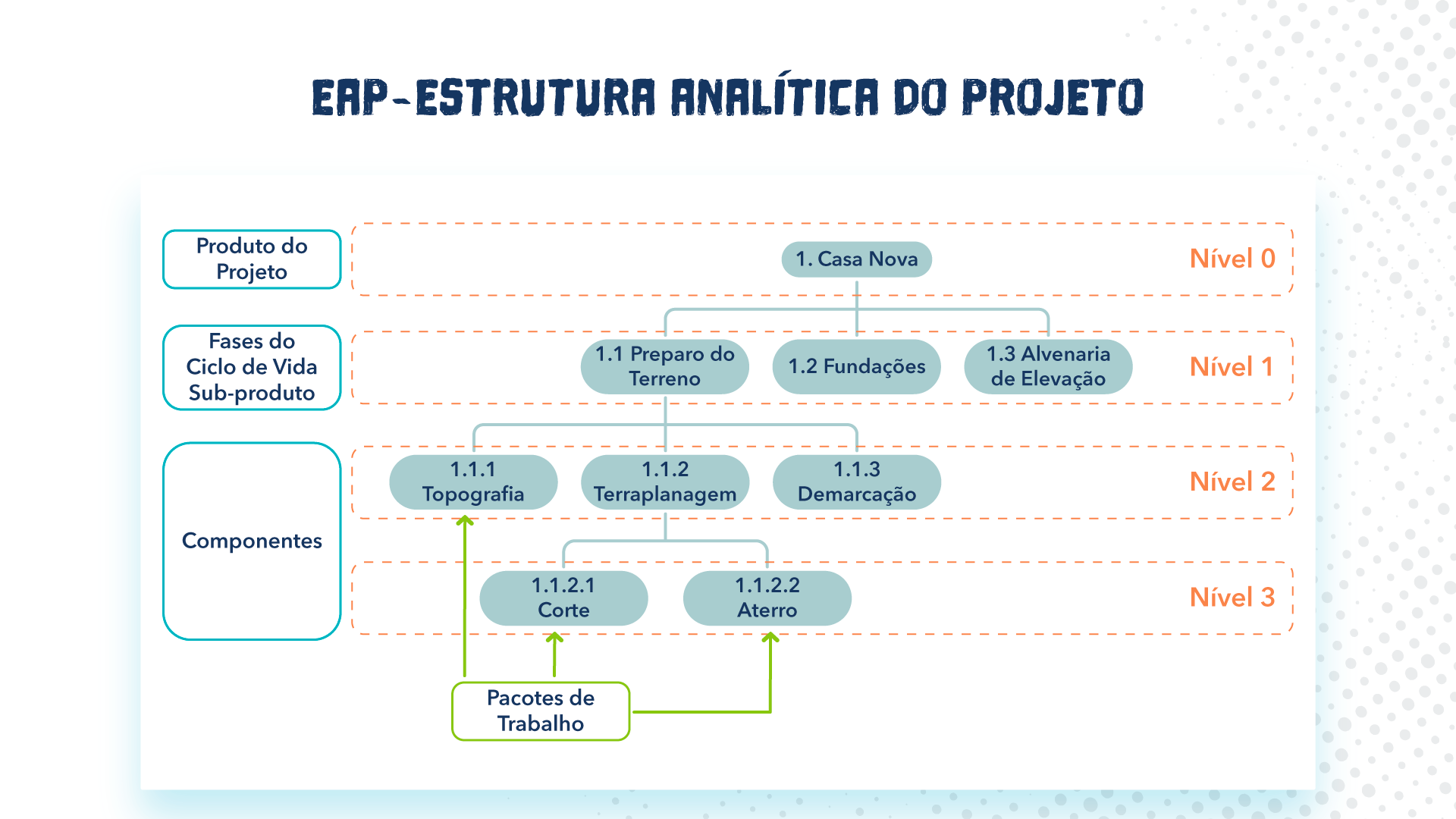Resumo Gerência de Projeto
Projeto:
Ter objetivo;
Temporário;
Tem início, meio e fim;
É único.
PMI:
Autoridade global em gerenciamento de projetos;
Dividido em capítulos.
Gerente de projetos:
Segundo PMI:
Pessoa designada para liderar a equipe do projeto;
Responsável por alcançar os objetivos do projeto;
Facilitar o trabalho da equipe;
Entregar dentro do prazo e custos;
Adquirir os recursos;
Contratar e motivar os integrantes;
Gerir os riscos;
Criar canais de comunicação;
Desenvolver meios de negociação.
Guia PMBOK:
Conjunto de conhecimento amplamente reconhecido como BOA PRÁTICA.
Áreas de conhecimento: conjunto de processos associados com um tema específico.
10 áreas mais usadas nos projetos:
Riscos;
Comunicações;
Recursos;
Qualidade;
Custos;
Cronograma;
Escopo;
Integração;
Partes Interessadas (stakeholders);
Aquisições.
Gerenciamento do escopo:
Processos para assegurar que o projeto inclui todo o trabalho necessário, e apenas o necessário, para terminar o projeto com sucesso.
Gerenciamento do cronograma do projeto:
Processos necessários para gerenciar o término dentro do prazo.
Gerenciamento dos custos do projeto:
Planejamento, estimativas, orçamentos, financiamentos, gerenciamento e controle dos custos, para que o projeto seja terminado dentro do orçamento.
Gerenciamento da qualidade do projeto:
Processos para incorporação da política de qualidade da organização com relação ao planejamento, gerenciamento e controle dos requisitos de qualidade do projeto.
Gerenciamento dos recursos do projeto:
Identificar, adquirir e gerenciar os recursos necessários para conclusão.
Gerenciamento das comunicações do projeto:
Assegurar que as informações do projeto sejam planejadas, coletadas, distribuídas, gerenciadas e monitoradas de maneira apropriada.
Gerenciamento dos ricos do projeto:
Condução de planejamento, identificação e análise de gerenciamento de risco, planejamento de resposta, implementação de resposta e monitoramento de risco.
Gerenciamento das aquisições do projeto:
Comprar ou adquirir produtos, serviços ou resultados externos à equipe do projeto;
Gerenciamento e controle para desenvolver e administrar acordos como:
Contratos;
Pedidos de compra;
Memorandos de entendimento;
acordos de nível de serviço internos.
Gerenciamento da integração do projeto:
Identificar, definir, combinar, unificar e coordenar os vários processos e atividades de gerenciamento de projeto dentro dos Grupos de Processos de Gerenciamento do Projeto.
Partes interessadas (stakeholders):
Algo ou alguém que possa ser afetado, ou sentir-se afetado por uma decisão, atividade, ou resultado de um projeto;
Internos: estão dentro da empresa. Ex: acionistas, colaboradores, gestores, etc.
Externos: estão fora da empresa. Ex: clientes, concorrentes, fornecedores, governo, etc.
Stakeholders primários: são aqueles que exercem influência direta na empresa. Ex: cliente, funcionário, concorrente, investidor, etc.
Stakeholders secundários: são aqueles que exercem influência de forma indireta. Ex: governo, imprensa, comunidade, etc.
Identificar logo após o termo de abertura ser aprovado, gerente definido e começo da formação da equipe;
Cálculo canais de comunicação: n * (n - 1) / 2. N é o número de partes interessadas.
Classificar stakeholders (baseado na influência sobre o trabalho do projeto ou equipe):
Upward: o gerenciamento sênior da organização executora ou organização cliente, patrocinador e comitê diretivo;
Downward; a equipe ou especialistas contribuem com conhecimento ou habilidades em uma capacidade temporária;
Outward: grupos de partes interessadas e seus representantes fora da equipe do projeto, como fornecedores, departamentos do governo, o público, usuários finais e reguladores;
Sideward: os pares do gerente do projeto, como outros gerentes de projetos ou gerentes médios que estão concorrendo por recursos de projeto escassos ou que colaboram com o gerente do projeto em compartilhamento de recursos ou informações.
Nível de engajamentos:
Desinformado: sem conhecimento do projeto e impactos potenciais;
Resistente: cientes do projeto e dos impactos potenciais, mas resistentes a quaisquer mudanças que possam ocorrer como resultado do trabalho ou dos resultados do projeto. Essas partes interessadas não apoiarão o trabalho ou as saídas do projeto;
Neutro: cientes do projeto, mas não apoiam nem resistem;
Apoiadora: cientes do projeto e dos impactos potenciais e apoiadoras do trabalho ou de seus resultados;
Líderes: cientes do projeto e dos impactos potenciais e engajadas ativamente para garantir que o projeto tenha êxito
Gerenciar partes interessadas:
Gerenciar conflitos: o gerente deve garantir que os conflitos sejam solucionados de forma oportuna;
Consciência cultura: ajuda o gerente e a equipe a comunicar com eficácia, considerando as diferenças culturais e os requisitos das partes interessadas;
Negociação: obter apoio ou acordo que apoia o trabalho do projeto ou seus resultados e para solucionar conflitos;
Observação/conversação: manter-se atualizado em relação ao trabalho e atitudes dos membros da equipe e outras partes interessadas;
Consciência política: entendimento das relações de poder dentro do projeto e ao seu redor.
Monitorar engajamento dos stakeholders:
Processo de monitorar as relações das partes interessadas do projeto e adaptação de estratégias para engajá-las através da modificação de planos e estratégias de engajamento;
Patrocinador (sponsor):
Pessoa ou um grupo que fornece recursos e suporte para o projeto;
Responsável pelo sucesso do mesmo.
Atividades:
Decomposição dos pacotes de trabalho;
Possuem atributos. Ex: ID, nome, predecessoras, sucessoras, etc.
Marcos:
Pontos de verificação do andamento;
Não tem prazo ou duração;
Definido pelo patrocinador ou gerente;
Estão da declaração do escopo e no dicionário da EAP.
Caminho crítico:
Caminho que requer mais tempo entre início e fim do projeto;
Qualquer atraso no caminho causa atraso na entrega do projeto;
Atividades com folga zero;
Atividades que atrasarem podem causar folga negativa.
Classificação das dependências:
Obrigatória: tem que fazer A antes de B;
Arbitrária: Preferível fazer A antes de B;
Externa: depende do desejo de alguém externo (patrocinador ou governo).
Tipos das dependências:
Término-início: início de B depende do fim de A;
Início-início: início de B depende do início de A;
Término-término: fim de B depende do fim de A;
Início-término: fim de B depende do início de A.
Estimar as durações das atividades:
Não chutar prazos;
Não fazer aumento arbitrário;
Não colocar gordura.
Tipos de estimativas:
Um ponto: baseada em opinião especializada, informação histórica ou ADIVINHAÇÃO.
Análoga (top-down): usar a duração real de uma atividade anterior semelhante + opinião especializada.
Paramétrica: relação estatística entre dados históricos e outras variáveis. Ex: 5 desenhos x 5horas/desenho = 25horas.
3 pontos: Pessimista + (4 x Mais provável) + Otimista / 6.
Desenvolver o cronograma (ferramentas e técnicas):
Método do caminho crítico: não leva em consideração os recursos, só a sequência de atividades.
Método da corrente crítica: leva em consideração os recursos e a sequência de atividades.
Espera: esperar X tempo para iniciar próxima atividade após fim da anterior.
Antecipação: começar próxima atividade X tempo antes do término da anterior.
Compressão: analisar o custo-benefício para reduzir o cronograma. Ex: aprovar horas extras.
Paralelismo: fases ou atividades normalmente executadas em sequência são executadas em paralelo.
Sistemas para gerência de projeto: MS Project, Gantt project, Tasker, etc.
=== LINKS E ANEXOS ===



